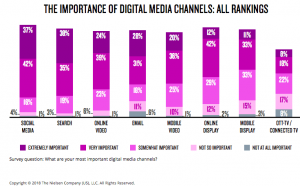For different people, clear communication means different things. That’s why when you ask a question some might give a short answer while another gives a detailed explanation. However, what we can all agree on is that clear communication leads to less confusion and increased productivity.
It’s even more important in an office environment because confusion between two employees occurring due to poor communication can have a significant impact on the company. It becomes even more significant if it’s a department-wide memo or a company memo send out by a top executive.
Fortunately, there are few things you can do to improve clear communication which leads to a better working environment.
Define Communication Channels
10-15 years ago, most communication was done through email, telephone or face to face meetings. But in today’s fast-paced business environment, people tend to use many other tools to facilitate communication.
Skype group chats, Slack groups, shared whiteboards, Facebook groups, and many other tools are used to communicate and get things done in real-time. Sometimes things can get a bit overwhelming and people might struggle to decide the necessary channel to communicate properly.
In large organizations it’s common to find different tools used by different departments. So it’s important that you clearly define which channel is used for what. For example, if there’s a Skype group for development work then it’s critical that it’s not used for some friendly banter from time to time. Although some may be okay with it, there could be a few that take offense.
Highlight the importance of individual communication
Large portion of communication within the office happen between individuals. And one area where most co-workers struggle is finding the correct channel to reach those individuals.
Of course something like this can’t be defined and up to the involved individuals to find the right channels. But it’s equally important that you educate your employees that something like this exist and encourage them to identify the right channel to reach people.
Some may prefer emails while someone else will appreciate a quick phone call. Figuring this out is a sure way to increase clear communication.
Well define policies
When we think of communication we tend to think of meetings and email exchanges. But well-defined policies are also part of clear communication. Am I allowed to download this? Is it okay to install this on my office laptop? Is it okay to watch YouTube videos? If these are not clearly outlined in your company handbook or work agreement then you’re heading for trouble.
Sometimes it’s not that easy come up with these policies. For example, most startups don’t have clear restriction regarding Internet usage. They trust the worker to exercise caution and good judgment when doing these things.
In a startup with few employees where the work done is clearly visible this won’t be a big issue. But once you start getting bigger it’s not that easy to measure the workload and then you might have to include them in the policies.
With companies now embracing remote working, outsourcing, telecommuting and flexible office hours another area that is troubling managers is absence management. And the usual ready-made policy which states working hours and leave entitlements just won’t cut is nowadays.
You need to clearly define what is expected of someone if they are working from home. Like how to log time online, how to get the approved through the HR system etc. Same goes for flexible working hours. During a specific period, you might need everyone at the office, or you might need everyone at the office during a specific day. Including them in the policies makes it clear and leads to no confusions.
Embrace Visual Communication
Although there are many more bits and pieces to it, communication is all about getting your idea across to someone else. And a good visual is almost always better than a lengthy document when it comes to communication.
Have a look at the below org chart. From a quick glance, you can see what are the future hires, who are the low performers and who’ve held their job for more than a year. Imagine doing that via a text document and you’ll realize why visual communication trumps boring text documents.
This is just one example. You can use a flowchart instead of describing a process, you can use a Gantt chart instead of a spreadsheet with timelines, and you can use a use case diagram instead of a requirement gathering document and many other visuals to communicate clearly.
Listed above are some methods you can use to improve and facilitate clear communication in the office environment which will directly result in a more productive team. You won’t be able to implement all these overnight, but it’s definitely a step in the right direction.
Business & Finance Articles on Business 2 Community(65)
Report Post








